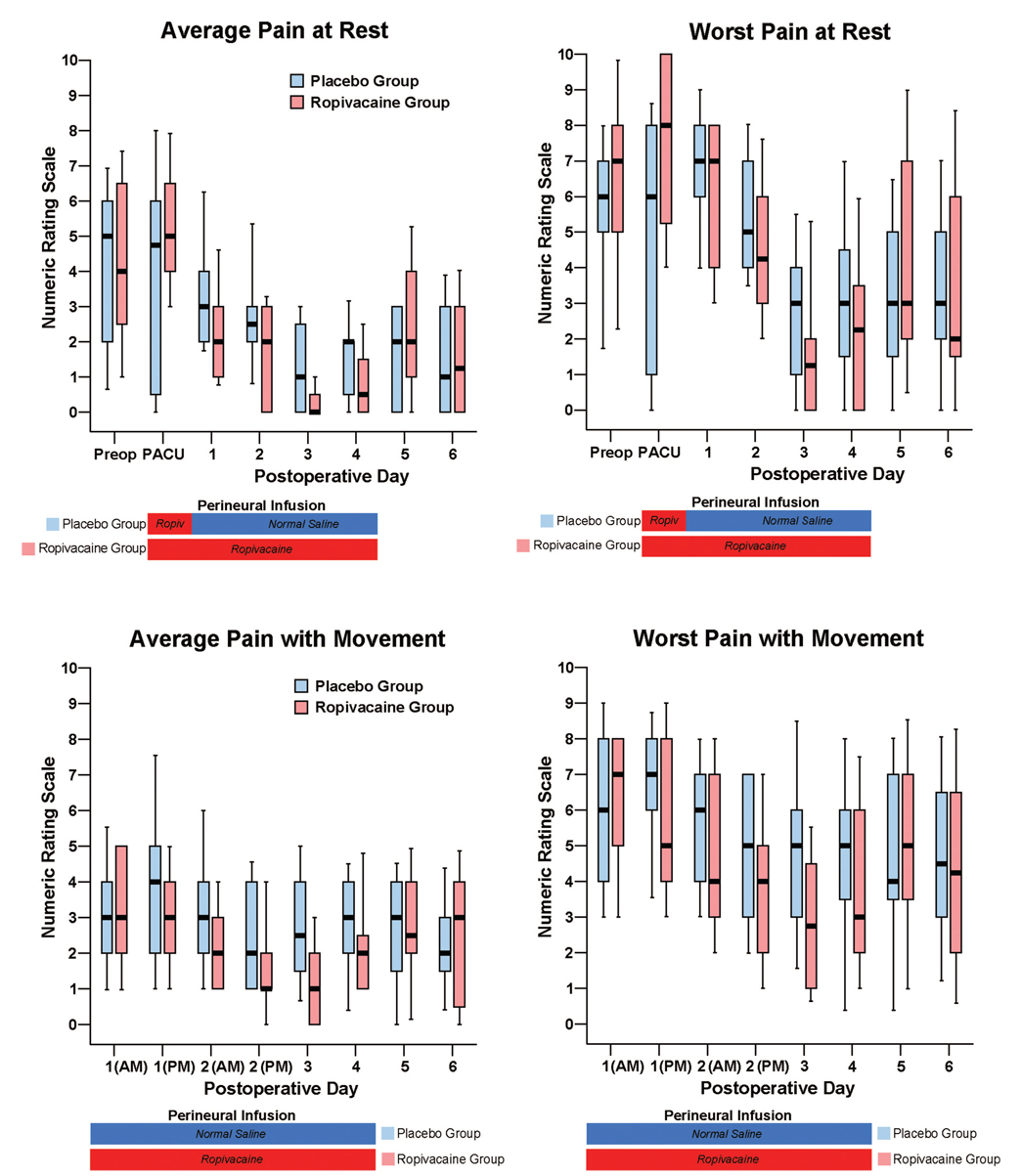Fig. 4.
Effects of femoral perineural ropivacaine infusion on postoperative pain after tricompartment total knee arthroplasty. Pain severity is indicated using a numeric rating scale of 0–10, with 0 equal to no pain and 10 being the worst imaginable pain. Data are expressed as median (horizontal bar) with 25th–75th (box) and 10th–90th (whiskers) percentiles for patients randomly assigned to the ropivacaine group (perineural ropivacaine from surgery through postoperative day 4) or the placebo group (perineural ropivacaine from surgery through 06:00 postoperative day 1 followed by perineural normal saline through postoperative day 4). Because each comparison dilutes all other P values, we restricted our analysis to 11 comparisons among secondary endpoints. For this reason, no statistical comparisons were applied to the data of this figure. PACU = postanesthesia care unit.

